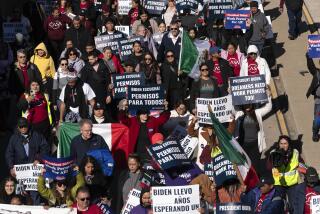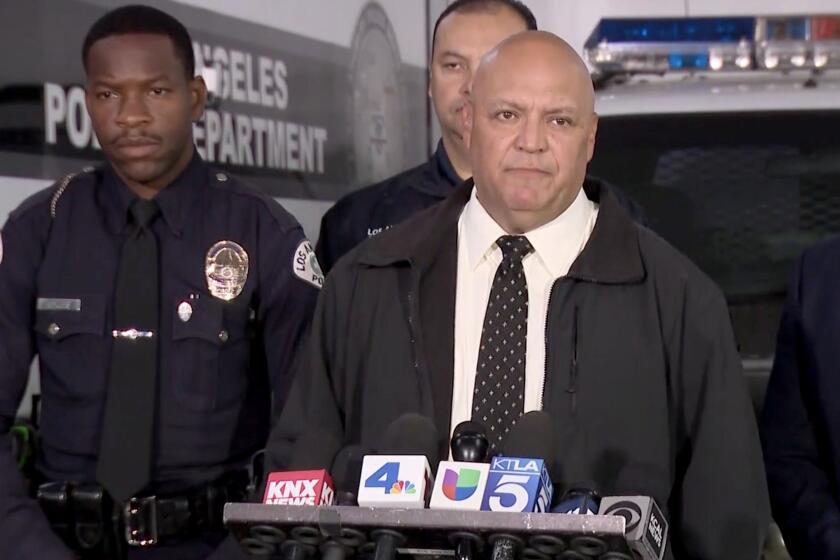Cuban asylum seekers, once welcomed into the U.S., face new roadblocks with ‘Remain in Mexico’

Cuban asylum seekers who have had a clear path to legal status in the United States since the 1960s are now finding that route blocked by the Trump administration’s “Remain in Mexico” policy, according to lawyers representing Cuban nationals.
About 4,600 Cuban nationals have been returned to Mexico while their asylum cases proceed since the start of the policy — officially known as the Migrant Protection Protocols — in January, according to government data. They account for about 12% of the total number of asylum seekers sent back to Mexico.
If those Cuban nationals had asked for asylum at the U.S.-Mexico border last year, they probably would have been paroled into the United States and been eligible for permanent residency under the 1966 Cuban Adjustment Act.
That law, signed by President Lyndon B. Johnson, recognized that Cubans fleeing a communist government had strong asylum cases. It allowed access to a green card for Cuban nationals who had been inspected and admitted or paroled into the United States and had also spent at least one year and one day in the U.S.
However, this year, Cubans who ask for asylum at the U.S.-Mexico border have been returned to Mexico and, like all non-Mexican asylum seekers under the new policy, must wait as many as eight months in Mexico while their asylum cases make their way through the U.S. immigration court system.
The new asylum policy has left many Cuban migrants along the southern border confused about why they cannot enter the United States as easily as their fellow countrymen have in the past.
“I never imagined I would be returned to Mexico,” said a 55-year-old Cuban asylum seeker who identified herself only as Teresa for fear of jeopardizing her immigration case by speaking publicly. “I was very disappointed because I went in with the idea of entering, asking for asylum and being with my family. It felt like crashing against a metal wall.”
Teresa, who said she fled Cuba because of political persecution by the communist government, has two adult sons in the United States.
Being in Mexico felt like “coming out of a tunnel with a blindfold on,” Teresa said. She had no phone, no way to contact her family and was too afraid to speak to strangers for fear that they’d recognize her Cuban accent and kidnap her.
While in Mexico, Cuban asylum seekers like Teresa do not accrue any time for the one-year residency requirement under the 1966 law, making it more difficult for Cuban asylum seekers to obtain benefits available to them under the law.
“Remain in Mexico has negated the Cuban Adjustment Act,” said Charlene D’Cruz, an immigration lawyer who has worked with Cuban nationals in Matamoros, Mexico, just south of Brownsville, Texas.
Some of the people in Matamoros include Cuban doctors who say the communist government forced them to work in Venezuela as well as asylum seekers with relatives in the United States.
When they fled Cuba, many of them expected to be allowed into the U.S. just as other Cubans have since the 1960s. Immigration lawyers say the Trump administration has made so many changes to the asylum process that it is sometimes difficult to explain the changing landscape.
“Cubans keep coming, and I’ve had old clients tell me, ‘My sons, my daughters or my nephews are coming; what’s going to happen to them?’” said San Diego immigration lawyer Tammy Lin. “It’s really hard to tell family members here who are now citizens or have green cards that the process is completely different from what it was.”
This is the first time since the Cuban Adjustment Act was signed into law that asylum-seeking Cubans have been barred from entering the United States like this, Lin said.
Cuban nationals are also subject to the Trump administration’s move to effectively end asylum claims at the U.S.-Mexico border.
Both policies are meant to dissuade illegitimate asylum seekers at the southern border, according to Trump administration officials who have defended the rules. Trump this week cited the strategy as one of the factors behind a 60% drop in apprehensions along the southern border from May to September.
The asylum ban, announced July 16, would prohibit claims from anyone who passed through another country en route to the U.S. if they had not sought and been denied asylum in that country first.
Because of pending litigation, the long-term status of that policy is still up in the air. But last month, the Supreme Court granted an emergency appeal by Trump administration lawyers allowing the rule to take effect while the dispute works its way through the courts.
D’Cruz said that telling Cuban migrants about that decision wasn’t easy.
“There was total confusion,” she said. “They were like, ‘What is going on?’”
D’Cruz noted that while asylum seekers may not be eligible for asylum in the U.S. if they hadn’t applied first in other countries, they are still eligible for other protections such as relief under the international Convention Against Torture or another order known as withholding of removal.
Solis writes for the San Diego Union-Tribune.
More to Read
Start your day right
Sign up for Essential California for news, features and recommendations from the L.A. Times and beyond in your inbox six days a week.
You may occasionally receive promotional content from the Los Angeles Times.







